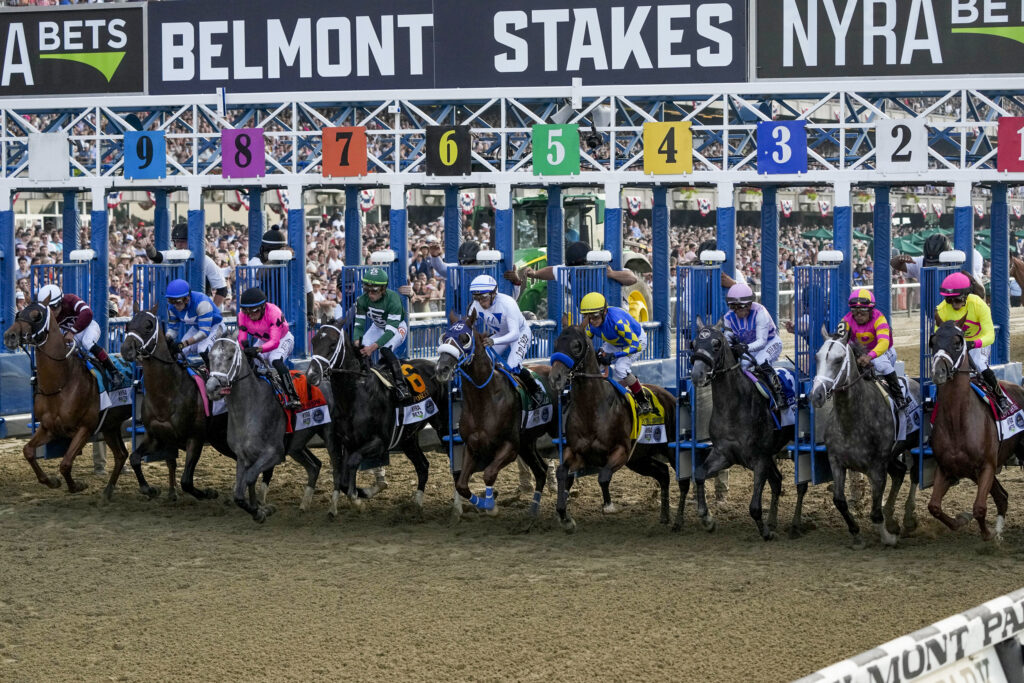A patent bet is a type of bet that can be placed on any sport. It consists of several bets combined into one single wager. It is similar to an accumulator, where you combine several selections and if all or some of them win, then you will receive a larger payout.
Patent Bet: Explanation & How it Works
A patent bet is a type of bet that can be placed on any sport. It consists of several bets combined into one single wager. It is similar to an accumulator, where you combine several selections and if all or some of them win, then you will receive a larger payout.
Table of Contents
- 1 What is a Patent Bet & How to Place them?
- 2 What is a Patent bet?
- 3 How does a Patent bet work?
- 4 How much does a Patent bet cost?
- 5 How does a Patent bet work in horse racing?
- 6 How does a Patent bet work in football?
- 7 How do you calculate a Patent bet?
- 8 Can I place an each-way Patent?
- 9 What happens to a Patent with a non-runner?
- 10 What is the difference between a Patent and a Trixie?
- 11 Summary
- 12 Frequently Asked Questions
What is a Patent Bet & How to Place them?
A patent bet is a type of bet that can be placed on any sport. It consists of several bets combined into one single wager. It is similar to an accumulator, where you combine several selections and if all or some of them win, then you will receive a larger payout.
What is a Patent bet?
A patent bet is a type of wager that allows a punter to combine multiple single bets on different outcomes into one, allowing them to effectively cover a range of potential selections. As with other types of sports betting, such as accumulators and trebles, the idea behind a patent bet is to increase the chances of winning for the better by placing several wagers at once.
This type of bet can be used in both pre-match and in-play betting markets, and it is often used by experienced bettors who understand how to get the most out of their stakes. The number of bets that can be combined into a single patent bet varies from bookmaker to bookmaker, but generally speaking they allow you to combine up to seven bets into one wager.
How does a Patent bet work?
A patent bet is a type of combination bet in which the gambler bets on three different selections, and all must be correct for the bet to be successful. The patent bet consists of seven different bets: the straight win, treble, three singles, three doubles and one four-fold accumulator. It is a popular form of betting amongst horse racing fans as it can offer good returns even if one selection fails.
When placing a patent bet, the gambler will have to decide on their selections first. This can include horses to win, horses placed or horses to forecast. Once they have decided on their selections they need to place them in their desired order and then place the 7 bets that make up the patent bet. These include 1 single win bet for each selection, 3 double bets (2 selections) and 1 treble (3 selections). If all seven bets are successful then so is the patent bet – however if any of these fail then the entire patent bet is lost.
Another advantage of placing a patent bet is that only one selection needs to win for some return from higher stake, unlike an accumulator where all selections must be correct for any return at all. Even if only one selection occurs successfully out of 7 total bets there can still be a return from your stake – something which cannot be said for an accumulator or other types of combination bets.
Patent Bet Example
A patent bet is a type of wager that involves betting on three selections from different events. The first selection is known as the ‘banker’, and stakes are placed on all three selections to guarantee a return. The initial stake amount for each selection must be the same, but the returns will vary depending on how many selections win or lose. For example, if two out of three selections win, then the stake for those two winning selections would be returned, as well as any potential winnings to make up the total returns.
In order to place a patent bet, you will have to know how odds work in order to calculate your potential returns. Odds are usually expressed as fractions (e.g. 4/1), and they represent how much money you can win in comparison to your original stake. In this example, 4/1 means that if you place a £1 bet and it wins, then you will receive four times your original stake plus your own money back (£5). You should also take into account any applicable taxes before placing any patent bets with bookmakers or through online gambling sites.
Once you have calculated your potential returns from each selection based on the odds, you can then decide how much money you want to place per selection in multiple bet in order to guarantee a return overall regardless of whether some selections win or lose on their own merits. Patent bets allow punters to hedge their bets by spreading risk across multiple selections in different events while still being able to potentially profit if at least one selection wins – even if others don’t come through.

How much does a Patent bet cost?
A patent bet is a type of bet that can be placed in horse racing. This type of bet requires the punter to select three horses and then back them in the order they finish first, second and third in a race. The total cost amount of a patent bet varies depending on the bookmaker offering the bet, but typically starts at around £2 for each line of three selections. In addition to this stake, there are other costs associated with placing this type of wager. For example, some bookmakers may charge an additional fee for placing each line or require customers to pay higher minimum stakes when making multiple lines.
In terms of payouts, a successful patent bet will return significantly more than its initial investment. However, due to the complexity involved in predicting which horses will finish in what order, it is not uncommon for punters to lose out on their wager if even one selection fails to place in the top three at the end of the race. This makes selecting three reliable runners all the more important when placing a patent bet, as well as ensuring that good value has been found with whatever odds are being offered by the bookmaker.
How does a Patent bet work in horse racing?
A patent bet in horse racing is one of the most popular wagers among punters. It is a three-way bet, made up of seven bets. A single stake is placed on three singles, three doubles and one treble. This means that if any single selection wins, the whole bet is successful. However, even if only one selection fails to win or place, your entire stake will be lost.
When making a patent bet in horse racing, you have to choose three selections for each race (or event). You will then make seven individual bets with different combinations of each selection – these are known as the four singles, two doubles and one treble. The four singles mean that if any single selection wins the race (or event), you will receive a return from these four selections. The two doubles mean that if any two selections finish first and second (in either order), you will get a return from those two doubles. Finally, the treble requires all three selections to finish first, second and third in order for a return to be generated.

How does a Patent bet work in football?
It’s important to note that when placing a patent bet in horse racing you must take into account how likely it is for all three horses or runners to achieve the required result for your treble selection to be successful. This means it can be beneficial to pick horses that are expected to have good performances in each race so that all of your selections have an increased chance of winning or placing at least once throughout the course of your patent bet.
A patent bet is a popular system which allows punters to win when they select three selections from different matches, all of which must be correct in order for the punter to receive a return. As with most bets, the greater the number of selections made, the higher the potential reward. The patent bet involves placing one single bet on seven outcomes – three singles (one selection from each match), three doubles and one treble. This means that even if just two out of your three selections are correct, you will still receive some sort of return owing to the double and treble elements of the bet.
In terms of understanding how it works, it can be likened to any other type of combination bet such as Trixie or Yankee. With a patent bet however, there is an additional benefit in that you don’t need all your selections to be successful in order for you to get a payout. In traditional football betting systems, unlike horse racing for example, where each-way bets are allowed, your entire stake is lost should just one selection not come through; this does not happen with a patent bet where at least something can be salvaged from what could have been an otherwise unsuccessful bet.

How do you calculate a Patent bet?
A Patent bet is a type of bet placed on three selections of seven different bets. It consists of the three bets: singles, three doubles and one treble. To calculate the returns of a Patent bet, you must first determine the total stake you will be placing. This is done by multiplying your individual stake with seven, since there are seven bets in total. Once you have the total stake, you can then calculate the returns from each individual bet by multiplying your stake by the odds given for that selection. Then add all the returns together to get your final return amount.
For example, if you have a €2 stake with two selections at 2/1 and one at 3/1, your total stake would be €14 (€2 x 7). If both selections at 2/1 were to win, then you would receive €16 back from that particular bet (€2 x 2 x 2 = €8). The third selection at 3/1 would give you a return of €6 (€2 x 3 = €6), so in total your return amount for this bet would be €22 (€8 + €6 = €16). Your net profit from this patent bet would then be calculated by subtracting the original total stake from the returns; in this case it would come to €8 (€22 – €14).
Can I place an each-way Patent?
An each-way Patent bet is a three-part wager commonly used in horse racing. It comprises one ‘win’ stake, three separate ‘place’ stakes, and three doubles and one treble. This allows punters to win money even if their selection finishes second or third. The amount of profit made depends on the number of places paid out and the size of the betting pool. An each-way Patent bet requires a minimum stake of four units: one for the win and three for the place. The amount of potential return is higher than a standard single bet for this reason.
When placing an each-way Patent bet, it’s important to consider all of the different permutations that you’re betting on. As well as predicting which horses will finish first, second or third, you also need to think about which horses could finish in any order from fourth to sixth place. This is why an each-way Patent bet can be more profitable than regular win/place bets, as you can hedge your bets over a wider range of possibilities. Furthermore, since it’s essentially made up of multiple separate bets, you have more chances of winning compared to other wagers such as straight forecasts or tricasts.
The risks associated with an each-way Patent bet depend on how much you choose to stake and what type of race it is. For example, if there are six runners in a race then there are seven possible combinations that could result in a winning return from your wager (i.e., 1st 2nd 3rd 4th 5th 6th). In races with bigger fields however, where more runners finish within the placings paid out by the bookmakers then obviously this increases your chances of getting some kind of return from your wager – although your total payout would be lower due to there being more competitors vying for victory or prize money positions.
What happens to a Patent with a non-runner?
When a patent bet is placed on a non-runner, the bet is not voided. Instead, the stake is returned to the punter. The return of the stake depends on the rules of the bookmaker where the patent bet explained above was placed. Generally, when a non-runner is present in a patent bet, it turns into a treble (if three selections are present) or double (if two selections are present). This means that the stake will be recalculated to reflect this change and then returned.
For example, if someone placed a £10 patent bet on four selections and one of those selections became a non-runner, then it would automatically become an each way treble. In this case, the stake would be recalculated from £10 to £20 and £20 would be refunded back to the punter. However, if only one selection is present and it becomes a non-runner then no refund is due as there can be no return without any other selections in place.
When dealing with non-runners in patent bets it’s important for punters to be aware of how different bookmakers handle them and what rules apply for refunds, as this could vary from place to place. It’s also useful to have some understanding of how odds are calculated in these situations so that you can calculate your potential returns accordingly. Knowing these details can help ensure that you get the most out of your bets and avoid any unwanted surprises when dealing with non-runners.
What is the difference between a Patent and a Trixie?
Both of these types of bets involve selecting multiple selections for the same event in order to enhance the potential winnings from a single wager.
A Patent bet is made up of seven different parts; three single bets, three double bets, and one treble bet. It involves selecting three selections, each with two additional doubles and one treble as back-up insurance should any one or two of your selections fail to win. This type of bet offers more security as it ensures that you will still make some kind of profit even if not all of your selections come through. However, this safety comes at a cost as the odds tend to be much lower than traditional betting options.
On the other hand, the Trixie bet is made up of four separate parts; three double bets and one treble. This type of wager requires that you select three different selections but only requires two successful outcomes in order to generate a return on your investment. The likelihood of success is higher due to the smaller number of required wins but this also translates into lower overall payout rates due to the reduced risk element. Additionally, compared to a Patent bet where all seven sections must be placed together, with a Trixie bet you are able to place each part individually which allows for greater flexibility when it comes to budgeting for your sports betting activity.
Summary
A patent bet is a type of wager that covers all possible selections within a given market and provides the opportunity for punters to place a bet with just one stake. They provide higher returns than conventional bets, but also come with greater risks. The key to this type of bet is understanding how it works, being aware of the potential rewards and understanding the risks involved before placing any bets. With careful consideration and understanding, a patent bet can be a great way to increase your betting profits.
Frequently Asked Questions
What sports can I place a Patent bet on?
Patent bets are a type of wager that allows bettors to combine different selections from various sports in a single wager. With this betting option, punters can combine selections from three football matches, two tennis games and one basketball game, for example. These bets can be placed on many popular sports like soccer, tennis, cricket, rugby union and league, American football, baseball and more.
What Sports Are Good for a Patent Bet?
Patent betting is an interesting wagering option for sports fans looking to increase their chances of winning when placing bets on their favourite teams and players. Popular sports for this type of betting include football, basketball, horse racing, rugby and cricket.
Why Place a Patent Bets?
A patent bet is essentially when a punter places multiple bets with different selections in order to guarantee a win. This type of wager allows players to secure some return even if not all their selections are successful.
Does a Patent Bet Include Singles?
A patent bet does indeed include singles, as it is composed of three parts: one single, and two doubles. So when you place free bets on a patent bet, you are placing three individual bets on the same selection, each with different stake amounts. However, if the selection wins or loses all three components of the bet are affected equally.
Is a Patent bet worth it?
A Patent bet is a full-coverage multiple bet consisting of seven bets on three selections: three singles, three doubles, and one treble. While it provides coverage and the potential for returns even if one selection fails, it also requires a higher initial stake. Whether a Patent bet is worth it depends on the bettor’s assessment of the potential outcomes, their confidence in the selections, and their willingness to accept the associated costs and risks.
How do you win a Patent bet?
To win a Patent bet, at least one of your three selections must be successful. The bet includes three singles, three doubles, and one treble, covering all possible combinations. If all three selections win, you maximize your returns as all seven bets are successful.
What’s better, Trixie or Patent?
Both bets involve three selections, but they differ in the number of bets placed. A Trixie consists of three doubles and one treble (four bets), while a Patent includes those four bets plus three additional singles (seven bets in total). The advantage of a Patent is that it provides more coverage and potential returns, even if only one selection wins.
What is a Patent parlay bet?
A Patent parlay bet doesn’t exist as a distinct term. A Patent bet is a type of multiple bet that covers all combinations of three selections – three singles, three doubles, and one treble. On the other hand, a parlay, also known as an accumulator or combo bet, involves combining multiple individual bets into one larger bet. The two terms refer to different types of bets, and a Patent bet is not typically referred to as a “Patent parlay.”


















